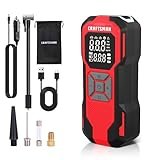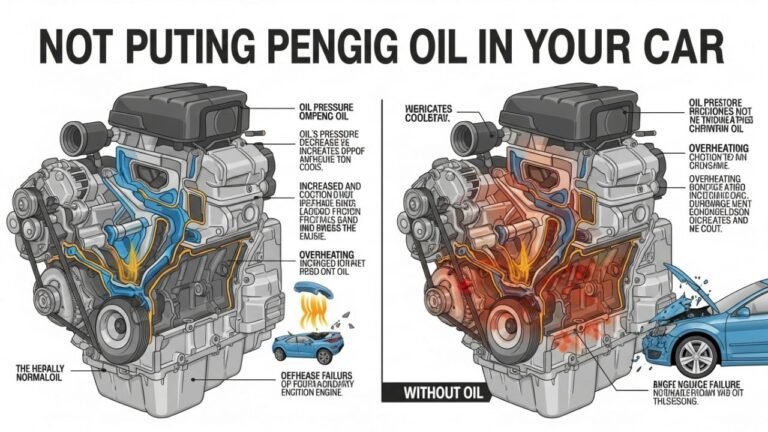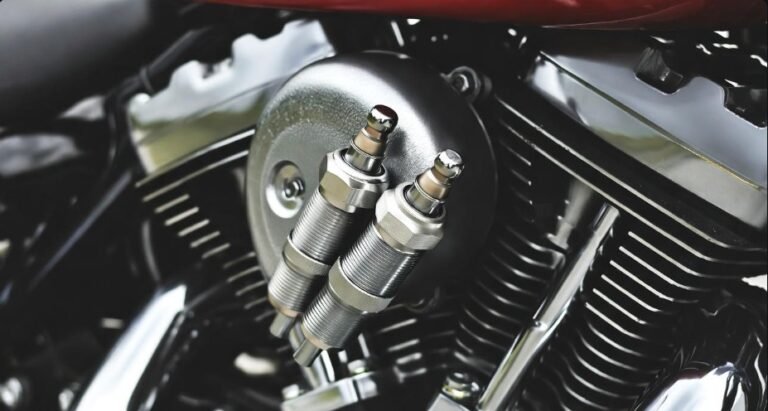3 Cool Facts About Vertical Windshield

Discover 3 cool facts about vertical windshields, especially how they perform in rain. Understand their unique benefits and potential challenges for car owners.
Key Takeaways
- Vertical windshields offer improved visibility in certain conditions.
- They can enhance cabin space and aerodynamics.
- Rain performance is a key consideration for vertical designs.
- Understand the trade-offs for optimal driving.
- Learn how vertical windshields impact your driving experience.
You might have noticed them on a few unique vehicles – the ones with a windshield that seems to stand straighter up. These are often referred to as vertical windshields, and they’re not just a styling choice. They can dramatically change how a car interacts with the road and the elements. For many drivers, especially those new to these designs or curious about automotive innovations, understanding what makes a vertical windshield different can be a bit puzzling. This article will break down three fascinating facts about vertical windshields, with a special focus on how they handle one of nature’s most common driving challenges: rain.
We’ll explore why some manufacturers opt for this design and what it means for your visibility, comfort, and safety, especially when the weather turns wet. Get ready to see car windows in a whole new light as we dive into the world of vertical windshields.
Understanding the Vertical Windshield: More Than Just an Angle
A vertical windshield, in essence, is a car windshield that is positioned at a much steeper angle compared to the traditional raked windshields seen on most modern vehicles. Think of a classic school bus or a vintage truck – these often featured a more upright glass. While sleek, aerodynamic designs have dominated automotive styling for decades, the vertical windshield design persists, especially in specialized vehicles like commercial trucks, buses, and some concept or niche passenger cars. The angle of a windshield isn’t just about aesthetics; it plays a crucial role in visibility, aerodynamics, and even interior space.
The primary function of any windshield is to protect occupants from the elements and debris while allowing clear visibility. A more vertical angle aims to achieve these goals differently. For instance, it can provide a larger viewing area directly in front of the driver, which can be particularly beneficial for large vehicles with higher seating positions. It also influences how rain, snow, and road spray interact with the glass, which we’ll get into more detail shortly. This design choice is often tied to specific utilitarian purposes rather than pure automotive fashion, though some forward-thinking designs are exploring its potential for passenger cars too.
Fact 1: Enhanced Visibility and Interior Space
One of the most significant advantages of a vertical windshield is its potential to offer a broader and less distorted field of vision, especially directly in front of the vehicle. Because the glass is closer to a perpendicular angle to the road, it can reduce the amount of reflection from the dashboard and interior. This means drivers can often see the road surface and immediate surroundings more clearly. This is why large trucks and buses frequently use a more vertical windshield – it helps drivers judge distances and navigate tight spaces more effectively.
Consider a delivery truck driver who needs to constantly see the curb when parking or maneuvering in a crowded urban environment. A vertical windshield provides a more direct, less angled view of these critical areas. For passenger vehicles, this benefit translates to a feeling of openness and a potentially larger perceived interior space. The cabin can feel less claustrophobic when the windshield isn’t leaning back significantly, allowing for a more commanding driving position and a greater sense of connection to the outside world. This design can also influence the overall shape and aerodynamics of the vehicle, though this is a complex interplay of many factors.
How Vertical Windshields Impact Interior Design
The steeper angle of a vertical windshield can free up significant interior real estate. Manufacturers can push the dashboard further forward, creating a more spacious cockpit. Alternatively, the extra room can be used for more comfortable seating arrangements or a larger storage area behind the front seats in vehicles where passenger comfort is paramount.
This design also influences the placement of instruments and controls. With a flatter, more upright surface, designers have more flexibility in integrating screens, gauges, and other driver aids. This can lead to a more ergonomic and user-friendly dashboard layout, making it easier for drivers to access information and operate vehicle functions without distraction. The overall feeling is one of spaciousness and thoughtful design, even in smaller vehicles that adopt this approach.
Fact 2: Aerodynamic Considerations and Fuel Efficiency
While it might seem counterintuitive, vertical windshields can also play a role in vehicle aerodynamics and, consequently, fuel efficiency. Traditional raked windshields are designed to channel air smoothly over the vehicle’s roof, reducing drag. A vertical windshield, however, presents a more direct face to the oncoming air. This can create more drag if not carefully managed.
However, designers can compensate for this by carefully shaping the rest of the vehicle. In many commercial vehicles, the cabin is already a large, boxy shape. A vertical windshield, when integrated into this design, can be part of an overall aero-package. For instance, the roofline might be carefully sculpted, or the sides of the vehicle might be streamlined to reduce turbulence. In some advanced designs, a vertical windshield might be combined with aerodynamic pillars and body panels to create airflow that can actually work to the vehicle’s advantage, perhaps by creating downforce or reducing lift at higher speeds.
The Trade-off: Drag vs. Other Benefits
It’s important to note that achieving good aerodynamics with a vertical windshield is a significant engineering challenge. The primary goal is often not to achieve the absolute lowest drag coefficient but to balance aerodynamic performance with other critical factors like visibility, interior space, and structural integrity. For commercial vehicles, the fuel savings gained from improved aerodynamics must be weighed against the cost of development and manufacturing. For passenger cars, the aesthetic and space benefits might outweigh marginal differences in fuel economy for certain market segments.
The National Renewable Energy Laboratory (NREL) has conducted extensive research into vehicle aerodynamics and how design choices impact fuel consumption. Their studies highlight that even small improvements in drag can lead to noticeable fuel savings over the lifespan of a vehicle. While a vertical windshield might present a greater initial challenge, innovative design solutions can mitigate these effects. For example, some vehicles with more upright windshields might employ a shorter hood or a more compact overall design to reduce the frontal area exposed to wind resistance.
Fact 3: Performance in Rain – A Closer Look
This is where the vertical windshield presents some of its most interesting characteristics, and where the “3 Cool Facts About a Car With Vertical Windshield in Rain” keyword truly comes into play. When rain hits an angled windshield, gravity and the angle of the glass work together to help water run off. The steeper the angle, the faster the water typically flows down and off the glass. This can be a significant advantage, especially in heavy downpours.
However, the situation isn’t always straightforward. A very vertical windshield, especially if it’s flat, can sometimes struggle with water sheeting. Instead of breaking into individual droplets that easily roll off, a large sheet of water might adhere to the glass, obscuring vision. This is where the quality of the glass, any coatings applied, and the effectiveness of the windshield wipers become critically important. Modern vehicles, regardless of windshield angle, utilize advanced wiper systems designed to clear water efficiently.
Understanding Water Behavior on Vertical Windshields
Here’s a breakdown of how rain can behave on a vertical windshield:
- Faster Runoff: Due to gravity, water tends to run down a vertical surface more quickly than an angled one, provided it can break into droplets.
- Sheeting vs. Droplets: The key is how the water breaks. If it forms large sheets, visibility can be severely compromised. This is more likely with a perfectly flat, vertical surface and without the aid of water-repellent coatings or effective wipers.
- Wiper Effectiveness: The design and effectiveness of windshield wipers are paramount. For vertical windshields, wipers might need to be larger, have a different arc, or employ advanced pressure systems to ensure a complete sweep of the cleared area.
- Hydrophobic Coatings: Many vehicles, regardless of windshield angle, benefit from hydrophobic coatings. These treatments cause water to bead up, making it easier for wind and wipers to remove. This is especially helpful for more vertical surfaces.
- Defogging and Defrosting: A more vertical windshield can sometimes offer better airflow for defogging and defrosting, as there’s less tendency for warm, moist air to get trapped against the glass.
Let’s compare this to a more traditionally raked windshield. While a raked windshield benefits from its angle to channel water, it can also be more prone to water accumulating in wiper troughs or creating a curtain of water that rolls down the hood, potentially splashing onto side windows or mirrors. The challenge with a vertical windshield is more about ensuring the water breaks up and is efficiently removed by wipers, rather than relying solely on gravity and angle.
Comparison: Vertical vs. Raked Windshields in Rain
To better illustrate the differences, consider this table:
| Feature | Vertical Windshield | Raked Windshield |
|---|---|---|
| Water Runoff Speed | Potentially faster due to gravity, if water breaks into droplets. | Relies on a combination of gravity and angle; can be slower if water accumulates. |
| Risk of Water Sheeting | Higher if not managed by coatings or wipers. | Lower, as angle generally promotes droplet formation. |
| Wiper Dependency | Very High; crucial for clearing vision. | High; essential for clear vision, but angle assists runoff. |
| Visibility in Downpours | Can be excellent if wipers and coatings are effective; can be poor if sheeting occurs. | Generally good, but can be affected by water curtains rolling down the hood. |
| Defogging/Defrosting Potential | Often good due to airflow. | Can be good, but air may get trapped in corners. |
The effectiveness of a vertical windshield in rain largely depends on the overall vehicle design and the quality of its components. A well-engineered vertical windshield system, complete with powerful wipers and potentially advanced hydrophobic treatments, can perform exceptionally well, offering clear views even in challenging weather. For instance, some heavy-duty trucks use oversized, heavy-duty wipers that sweep a massive vertical area with impressive efficiency. Passenger cars adopting this design would need equally robust solutions.
For drivers operating vehicles with vertical windshields in rainy conditions, maintaining excellent wiper blades is non-negotiable. They are the first line of defense against obscured vision. Regularly checking and replacing worn blades ensures that the design’s advantages are maximized and its potential drawbacks minimized. You can find tips on wiper blade maintenance and replacement from resources like the U.S. Department of Transportation’s National Highway Traffic Safety Administration (NHTSA), which emphasizes the importance of visibility for safe driving.
Pro Tip: Regularly inspect your windshield wipers for cracks, nicks, or stiffness. Replace them at least once a year, or more often if you live in an area with extreme weather conditions or use them frequently.
The Future of Vertical Windshields in Automotive Design
While currently more common in commercial vehicles, the concept of the vertical or near-vertical windshield is not beyond the realm of possibility for future passenger cars. As automotive manufacturers explore new ways to optimize interior space, improve visibility, and experiment with unique styling, the vertical windshield could see a resurgence, albeit in highly refined and technologically advanced forms. Imagine electric vehicles, which have different packaging constraints than traditional internal combustion engine vehicles, benefiting from designs that maximize cabin volume and driver awareness.
The integration of advanced driver-assistance systems (ADAS) also plays a role. Cameras and sensors need clear, unobstructed views. A flatter, more vertical surface might sometimes be easier to integrate these sensors into, or provide a more consistent view for them. However, the interaction of these systems with rain, fog, and glare on different windshield angles remains a significant area of research and development for automotive engineers.
Ultimately, the decision to use a vertical windshield comes down to a complex balance of engineering, design, and market needs. The lessons learned from commercial vehicles, combined with advancements in glass technology, coatings, and wiper systems, could pave the way for more innovative applications in the passenger car segment. The goal is always to enhance the driving experience – making it safer, more comfortable, and more engaging.
Frequently Asked Questions About Vertical Windshields
What is the main advantage of a vertical windshield?
The main advantages typically include enhanced forward visibility, a greater sense of interior space, and potentially improved access for mounting sensors for advanced driver-assistance systems.
Are vehicles with vertical windshields less aerodynamic?
They can be, as they present a larger frontal area to the wind. However, careful vehicle design, especially in commercial applications, can mitigate drag effectively through other aerodynamic features.
How do vertical windshields handle heavy rain compared to angled ones?
In heavy rain, a vertical windshield’s performance greatly depends on its surface and the effectiveness of the wipers. While gravity can help water run off quickly, there’s a higher risk of water sheeting across the glass if it doesn’t break into droplets. Well-designed wipers and hydrophobic coatings are crucial.
Are vertical windshields more expensive to produce?
Generally, yes. Complex curves and angles are common in modern raked windshields. A very flat, vertical pane might seem simpler, but achieving the necessary safety standards, structural integrity, and optical clarity can involve specialized manufacturing processes and materials, potentially increasing costs.
Can a vertical windshield improve fuel economy?
It’s unlikely to improve fuel economy on its own due to potential aerodynamic disadvantages. Any fuel economy benefits would stem from the overall vehicle design that compensates for the vertical windshield’s drag characteristics, or if it enables a more compact vehicle overall.
Do all trucks have vertical windshields?
No, not all trucks have strictly vertical windshields. Many modern semi-trucks and pickup trucks feature raked windshields for better aerodynamics and to reduce glare. However, larger commercial vehicles like buses and some vocational trucks often utilize more upright windshield designs for visibility and space.
What maintenance is specific to vertical windshields, especially in rain?
The most critical maintenance is ensuring your windshield wipers are in excellent condition. Keep them clean and replace them regularly. Applying a hydrophobic rain treatment to the glass can also significantly improve water runoff and visibility in wet conditions.
Conclusion
Vertical windshields, while not the norm for most passenger cars today, offer a compelling set of advantages and present unique considerations, particularly when it comes to driving in the rain—that crucial topic for any car owner. Their ability to enhance visibility and interior space, coupled with specific aerodynamic challenges and behaviors in wet weather, makes them a fascinating aspect of automotive design. Understanding these three cool facts—improved visibility and space, intricate aerodynamic balancing, and the nuanced performance in rain—equips you with a deeper appreciation for how windshield angles affect your driving experience.
Whether you encounter them on a trusty commercial vehicle or a visionary concept car, vertical windshields represent a different approach to automotive engineering. By focusing on effective wiper systems and potentially advanced coatings, drivers can maximize the benefits and minimize the drawbacks, ensuring a clearer, safer view of the road ahead, no matter the weather.






